Skinny to Muscular
Can Tight Hamstrings Cause Knee Pain: Causes, Symptoms and Solutions:
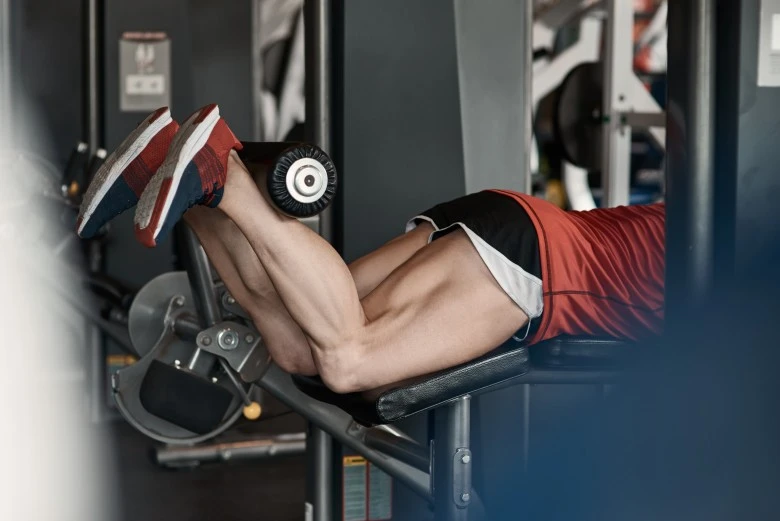
When stretching your hamstrings, what do you usually feel? Is it mid-thigh or behind the knee? Hamstring muscles are very likely to be injured and cause pain. Suddenly, it slows down and changes direction, exerting the effect of strain on these muscles. Extending the leg while running also overstretches hamstring muscles.
A hamstring injury is also known as a pulled hamstring. Can tight hamstrings cause knee pain, similar to how a belt that is too tight in an engine can disrupt its smooth operation? In this article, we will look deeply into what tight hamstrings are and what hamstring knee pain is. Symptoms of tight hamstrings, causes of tight hamstrings, can tight hamstrings cause knee pain? Can tight hamstrings cause calf pain? How tight hamstrings relate to knee pain and the treatment of tight hamstring.
Let’s dive in!
What Is Tight Hamstrings: Can Tight Hamstrings Cause Knee Pain?
They are skeletal muscles. They are three in number and used by our bodies for work, climbing stairs, squats, and performing many other leg movements. A tight hamstring condition occurs when the muscles become less flexible and shortened than in regular positions. This tightness makes it difficult to stretch the leg and bend at hip points.
It is one of the most common issues, particularly among athletes or people who sit for more than average time or do not stretch their legs regularly. Tight hamstrings pull the back of the Shinbone up towards a bum, bending the knee. Walking or running on bent knees places a lot of force on the Patila, which results in exterior knee pain.
The word hamstring comes from the old English word hamm, which means bend of the knee, and string refers to a ligament or tendon. Many medical sources used the hamstring muscles to refer primarily to the two groups of tendons at the back of the knee when the hamstring muscle is inserted into the tibia and fibula bones of the lower leg.
What Is Hamstring Knee Pain? Can Tight Hamstrings Cause Knee Pain?
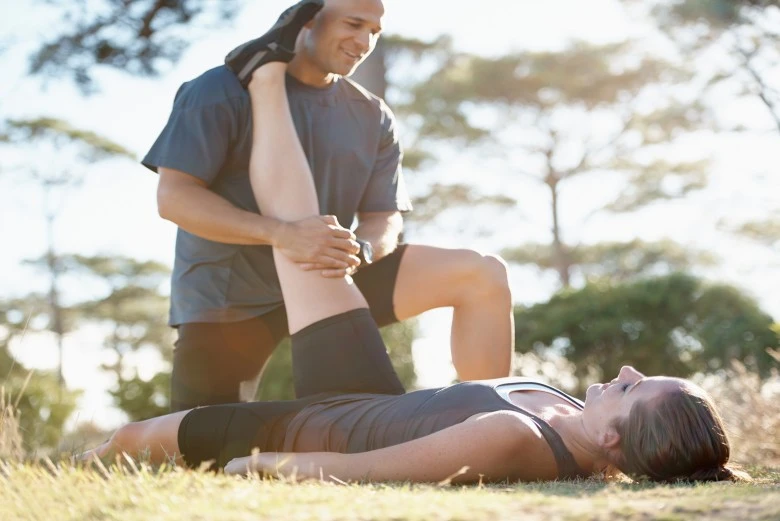
Hamstrings are muscle groups. It should be noted that other diagnoses could be going on, including, but not limited to, anterior cruciate ligament sprain(ACL Sprain), posterior cruciate ligament strain(PCL tear), damage to the quadriceps muscles, damage to hip flexors, and even sciatic nerve injury. A hamstring injury will fit into one of the three levels, depending on how badly you pull it.
It is a condition of swelling or tearing to one of the three hamstring tendons. It creates pain around the knee and throughout the leg. Hamstring tendonitis also leads to mobility impairment. Tendonitis, or tendonitis, happens when a tendon swells or sustains tiny tears.
When the hamstring tendons that cross the need joint are strained, pain in the back of the knees is felt.
Symptoms Of Tight Hamstrings:
The top symptoms include:
- Deep boatneck pain
- Pain that gets worse with activity is especially reproductive motions
- Swelling in and around the thigh
- Pain in our close to the knee joint
- Pain that radiates from the thigh and possibly into the hip of the pelvis
- Difficulty moving or bending the knee or intense pain. When trying to walk or bend the knee
- People also notice the pain after lifting weights that are too heavy
Can Tight Hamstrings Cause Knee Pain? Causes Of Hamstring Tightness:
Hamstring knee pain is usually caused by hamstring tightness if people don’t warm up before exercises and have weak or strong muscles in the front of the thigh compared to the back hamstring muscles. Jumping, sports, and running are the leading causes.
How Do Tight Hamstrings Relate To Knee Pain? Can Tight Hamstrings Cause Knee Pain?
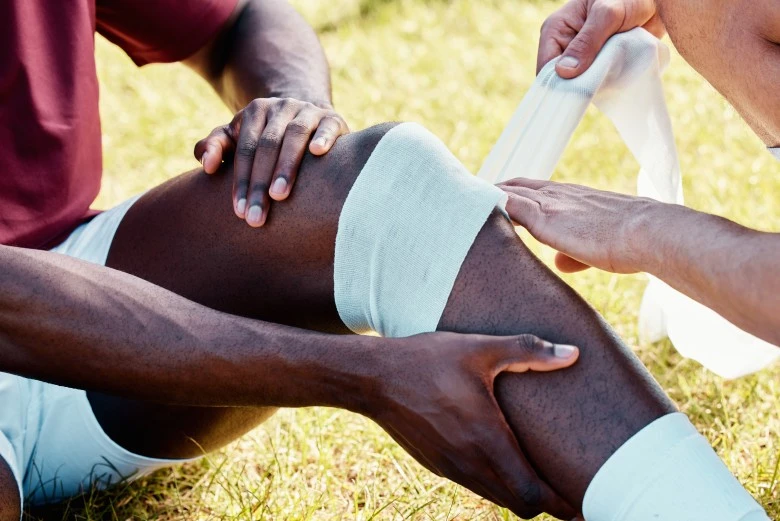
Due to the hamstrings being particular, they impact the knee, hip, and even the back. Most athletes with tight hamstrings might experience a variety of issues. They won’t be able to descend hips past 90 degrees while squatting heavy weights. E.G:
This puts them in the mid-range and safe zone but aggravates the problem since their hamstrings are fully stretched. Then, what time should you blast out of quat? The hamstring muscles are used to their greatest extent. This can become a vicious cycle, resulting in weak and tight hamstrings. The quadriceps will take over the inefficient hamstrings if the hamstrings are overly tight and do not allow complete hip extension pull load on the knee. All four quadriceps cover the patella after joining the tibial through the patellar before joining tribal tuberosity through patellar ligaments.
As a result, if quadriceps groups work excessively hard, it will impact the knee and make a perspective to can tight hamstrings cause knee pain.
Can Tight Hamstrings Cause Knee Pain:
Can tight hamstrings cause knee pain comes in a way that over-weighted screws can stripe a machine, leading to dysfunction? Can tight hamstrings cause knee pain? It is as if the internal springs have lost their give, leading to strain and discomfort.
Can Tight Hamstrings Cause Calf Pain?
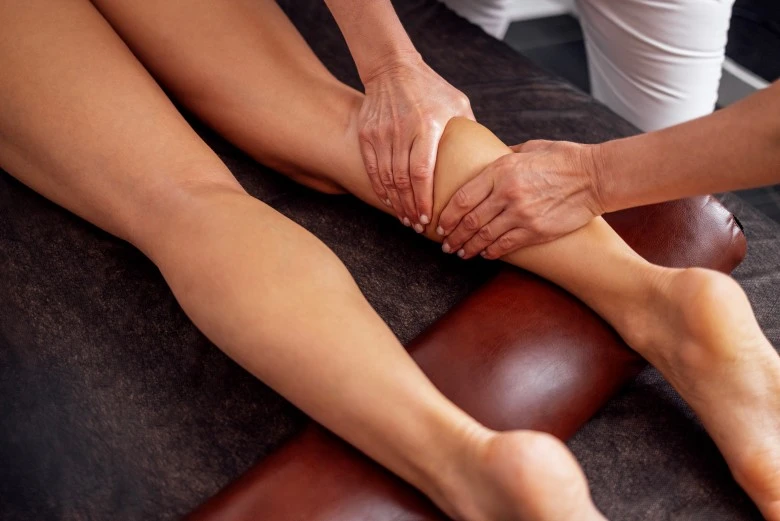
It is made of two muscles. Named the gastrocnemius muscle. This muscle starts at the end of the thigh bone behind the knee, runs down the legs, and inserts into the Achilles tendon with muscles. The role of the gastrocnemius is to point the foot and assist in bending the knee.
When pondering, Can tight hamstrings cause calf pain? Yes, tight hamstrings cause calf pain. The calf muscle and hamstrings are connected and cause pain. Can tight hamstrings cause calf pain and be the main culprit behind tight hamstrings?
When your hamstrings are tight, they cause an imbalance in the lower leg, leading to calf pain. What are the causes, or can tight hamstrings cause calf pain? Include Muscle imbalance, Overuse, and Sciatica. Treatments include stretching, proper warm-up, cool-down, massage, and foam rolling using the RICE method. Can tight hamstrings cause calf pain? Don’t be surprised if your calves also start hurting with your knees.
Damage to the top of the calf muscles that have not been conditioned or warmed up. Patients will complain of gradual pain occurring at the back of the knee. The top of the muscles will be sore to touch, and pain is produced again when resisting bending the knee.
Injuries occur to the top of the gastrocnemius in situations where the leg is straightened with the ankle bent. The calf is at a maximal stretch in this position; a forceful push off or point of the ankle can take place with too much force on the muscles, causing injury. At the therapy clinic, the 1-hour biomechanical assessment will address your pain and get to the bottom of the cause. Our podiatrists have a lot of treatments to get out of the pain. This involves:
- Dry needling and acupuncture
- Customized functional orthotics
- Personalized at-home stretching program
- Advice on joint strengthening
- Footwear options and fitting advice
If somebody gets pain in the knee, visit a therapy clinic.
Can Tight Hamstrings Cause Knee Pain? How Does A Diagnosis Occur:

During visits to the physical therapy office, the therapist will ask the patient simple or multiple questions about medical history, such as how you warm up regularly, daily activities, or how you like to exercise. The therapist can also ask questions or provide details about them. The patient should describe when they first started to feel the pain and the symptoms. Can tight hamstrings cause knee pain as a tensioned wire that can cut by creating sharp, persistent discomfort?
After discussing the history, the physical therapist must examine the thigh’s back.
The physical exam consists of flexing and extending the leg. While movement or pushing back thighs causes a lot of hurt or pain, it is essential to pinpoint exactly when or where a user feels pain.
Depending on the severity of the pain, the user needs X-rays to rule out other types of injuries like avulsion. After determining a hamstring’s knee tear, the doctor will work to create a recovery plan to move forward. Can tight hamstrings cause knee pain as a rubber band stretched too far for a can strap by putting extensive stress on the knee joint?
How To Treat Tight Hamstrings?
Stretching the hamstring is an uncomfortable process that takes many months to progress. Usually, you need to spend about 7 to 15 minutes twice daily or regularly do it for 4 to 6 weeks for any improvement in hamstring systems. Also, need to maintain regular stress programs for many years to prevent the problem. Permanently. Can tight hamstrings cause knee pain as much as a taut rope that strains until it frays?
To avoid hamstring knee pain, stretching correctly before any activities and following safety instructions to participate in activities or sports are essential. While a hamstring knee injury is possible, it can be mitigated significantly if handled perfectly.
Sometimes, hamstring and heel pain can be alleviated without medical treatment with the help of some exercises or preventive measures. But sometimes, it is so rare that they should contact a therapist. For Speed Up hamstring knee pain, you can follow these tips:
Gentle Mobilization:
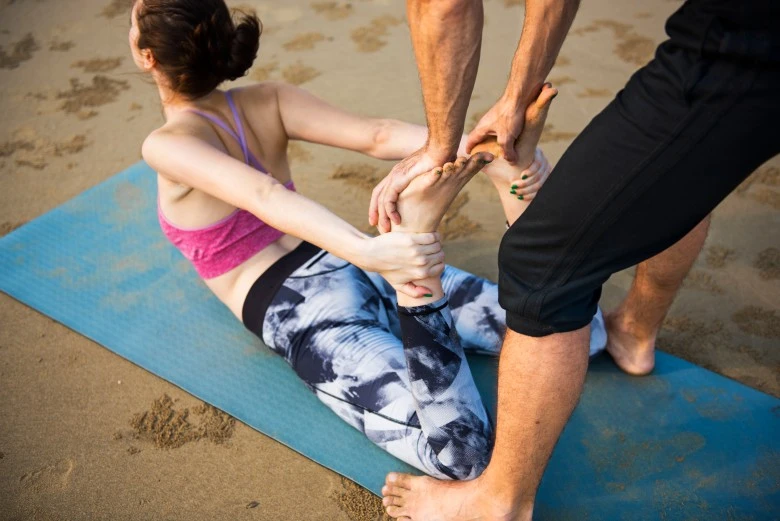
A gentle move is the key to keeping. Keep going to a physical therapist, who will help you learn proper stress management and protect you from further harm.
Unlike popular life beliefs that depend on the severity of pain, the patient will be told to participate in stretching activities overall. Meanwhile, overstretching also causes problems in the first place.
Use Ice:
Extreme swelling can also cause hamstring knee pain. Patients can apply ice to the spot where swelling occurs for 30 to 40 minutes until the pain subsides.
Massage:
Target the area around the thigh and hip. Massage his pain and muscle tension with an eraser. Inform the massage therapist about the potential energy before the session begins.
Avoid Sitting For Long Periods:
Although resting tendons is essential, becoming more sedentary can increase muscle tension and cause pain in other muscles and tendons.
Take NonSteroidal Anti-inflammatory Medications:
Take nonsteroidal like ibuprofen, which can help manage pain.
Swimming And Water Aerobics:
Swimming & water aerobics give the hamstrings to engage with the best results that accompany running and similar activities.
Rest The Effected Leg:
When the patient has hamstring knee pain, the important thing is to rest and recover from the injury immediately. Try to avoid any type of stress on your legs and avoid running. If it is excruciating, immediately consult your physical therapist until it disappears. However, because the injury does not mean you should just rest, you can continue exercising other body parts to ease recovery.
Helpful Strength Training:

To prevent injury, people with tendonitis focus on strength conditioning exercises that strengthen the tendons and muscles of the hamstring. Then with the process of avoiding tight hamstrings, different exercises could also be tried like, functional abdominal exercises, 4 persons yoga poses(different options to do that), yoga flexibility exercises
Can Tight Hamstrings Cause Knee Pain? Helpful Strength Exercises:
Isometric Hamstring Flex:
To perform an isometric hamstring flex, you must sit on the ground by extending your legs straight in front. Then, raise your knees slightly at a comfortable angle, just around 30 degrees. From the toss of the injured toward the face, hold for 5 seconds. Then relax almost for 7 seconds and then repeat.
Donkey Kickbacks:
To perform this, get down on the knees and hands by bracing the body with palms under the chest, then slowly lift and extend the injured leg to the ceiling. Hold for 15 seconds or do the injury to the ground. Repeat 3 to 7 times.
Nordic Hamstring Exercises:
Kneel and ask your partner to reach on both feet to perform this. Slowly lean forward, keeping your legs back and hips aligned. Hold for 10 to 15 seconds, then sit back and repeat.
Single Leg Windmill:
Rest the uninjured leg on a bench or chair by banding the knee. Give the injured leg a straight position by using down toward toss of the wounded leg. Keep your back flat by holding the stretch for 30 seconds, and repeat it 3 to 7 times. Meanwhile, it is also for the solution to the queries of can tight hamstrings can cause knee pain. Can tight hamstrings can cause calf pain? As well.
Can Squats Help with Tight Hamstrings?

Yes, squats can be helpful for addressing tight hamstrings, but it depends on how they are performed. Squats primarily target the quadriceps, glutes, and lower back, but they can also help stretch and strengthen the hamstrings when done correctly. There are different exercises to be done for squats like, barbell front squat alternative and normal front squat alternative.
Proper form is crucial to avoid further tightening the hamstrings or causing strain. Incorporating dynamic stretches and gradually increasing the range of motion can enhance the benefits of squats for relieving tight hamstrings.
Can Tight Hamstrings Cause Knee Pain Preventions:
Can tight hamstrings cause knee pain by pulling on the knee like a rope drawn too tight, threatening to snap?
- Perform stretching daily.
- Strengthen your support muscles.
- Proper warm-up before any exercise.
Can tight hamstrings cause back pain?
Yes, as you have read there is another problem associated with hamstrings when they are tight, can definitely cause back pain, why is this so? The hamstrings are connected to the pelvis, and when they are tight, they pull the pelvis backward which can lead to misalignment in the lower back. This misalignment can strain the lower back, resulting in discomfort or pain. Preventing this involves regular stretching, maintaining good posture, and strengthening the core. For those experiencing persistent or severe pain, consulting a healthcare professional is advisable.
Conclusion:
Can tight hamstrings cause knee pain, like a taut sail catching too much wind and tipping the boat off balance?
It interferes with daily activities and physical performance. Understanding the relationship between tight hamstrings and knee pain is vital for prevention and effective management. By maintaining flexibility through regular stretching, individuals can reduce the risk of knee pain and improve overall body function. Can tight hamstrings cause knee pain, just as tightening on musical instruments can cause them to break? Hope this article helps you. If you still have questions, ask in the comment below.

Ahmad Hassan is a fitness writer and transformation coach behind GymWithMind.com, specializing in the Skinny to Muscular Transformation niche. After going from 51 kg to 65 kg naturally, he now shares science-backed, practical strategies to help skinny guys build lean muscle through smart training, balanced nutrition, and consistency. His guides blend real experience with research to make fitness simple, achievable, and sustainable

 Skinny to Muscular1 year ago
Skinny to Muscular1 year agoDiscover Elite Body Sculpting: Best 8 Method Revealed For Precision Shaping:

 Skinny to Muscular1 year ago
Skinny to Muscular1 year agoRealistic 6 Month Body Transformation Female: From Struggle To Power

 Skinny to Muscular1 year ago
Skinny to Muscular1 year agoBody Fitness Tips For Female; Unleashing Fitness Secrets

 Skinny to Muscular2 years ago
Skinny to Muscular2 years agoHow To Lose 50 Pounds in 5 Months: Is it possible ?

 Skinny to Muscular1 year ago
Skinny to Muscular1 year ago9 Best Front Squat Alternative At Home And Gym:

 Skinny to Muscular1 year ago
Skinny to Muscular1 year agoTop 12 Books For Strength Coaches:

 Skinny to Muscular2 years ago
Skinny to Muscular2 years agoKettlebell Golf Workout;- Get Ready For Swing

 Skinny to Muscular1 year ago
Skinny to Muscular1 year ago15 Best Strength And Conditioning Books
